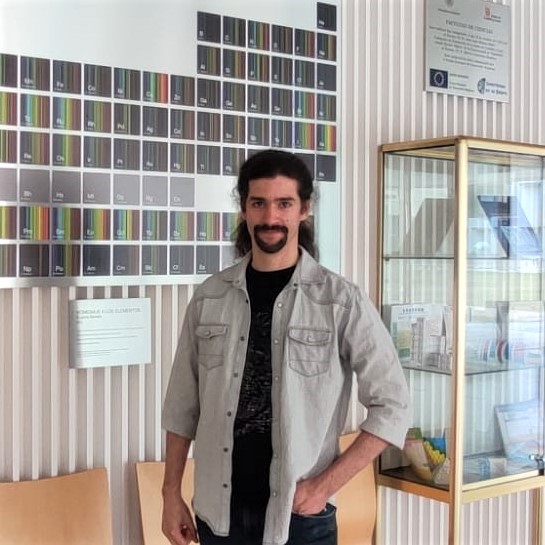
Alberto Diez de la Varga
| AREA | RESEARCH GROUP | INSTITUTE |
|---|---|---|
| Chemistry | Inorganic and Organometallic Molecules with Transition Metals (MIOMeT) | Faculty of Science |
I graduated with a degree in Chemistry from the University of Valladolid. At the same university, I obtained my masters and a PhD in Chemistry in 2016. After working as a postdoctoral researcher at the University of Burgos for almost two years, I moved to Strasbourg, where I worked as a postdoctoral researcher at the University of Strasbourg - C.N.R.S. for one year. I then moved to Paris, where I worked as a postdoctoral researcher at the University of Paris-Saclay for more than a year.
Finally, in 2022, I returned to the University of Valladolid as a postdoctoral researcher, within the framework of the María Zambrano Grants for the Re-qualification of the Spanish University System. I joined the MIOMeT research group in the Faculty of Science, where I am currently developing my research activity.
Study both the synthesis and characterisation of planar and non-planar aromatic species and the emerging physico-chemical properties of the new materials they form, with potential optoelectronic properties of interest. Unfortunately, conventional fluorophores such as aromatic hydrocarbons are prone to aggregate or adsorb unspecifically, especially in aqueous media. This fact limits the investigation of isolated molecular systems. The rational design of materials in which the building blocks are incorporated by self-assembly of small molecules allows the study of possible excimers formed between a few stacked chromophore units, being able to modulate their relative orientation or the distance that separates them. The cucurbit[8]uryl (CB[8]) molecule is able to dynamically connect up to two units (host or guest) via ternary complex formation. The development of a host-receptor methodology, based on new supramolecular heterotetrameric inclusion complexes between CB[8] and two chromophore-functionalised units as guests, provides useful adducts for the study of different optoelectronic properties such as singlet fission or two-photon absorption.
My vision is to be a reference not only in obtaining new and more efficient materials for electronic and photovoltaic applications but also in the study and characterisation of their properties.

